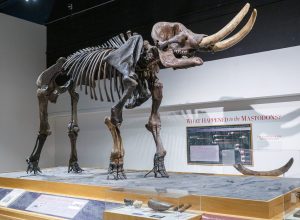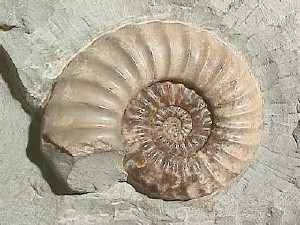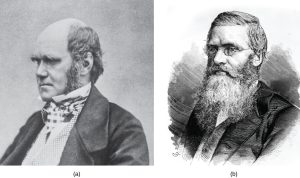1.1 Introduction to Evolution
What is Evolution?
All species of living organisms—from the bacteria on our skin, to the trees in our yards, to the birds outside—evolved at some point from a different species. Although it may seem that living things today stay much the same from generation to generation, that is not the case: evolution is ongoing.
Evolution is the process by which populations of organisms change over generations through inherited variations in traits. These changes can lead to the emergence of new species and the extinction of others. At its core, evolution explains the incredible diversity of life on Earth and how all living organisms are connected through common ancestry. It is important to understand that evolution is not a belief or a guess—it is a scientific theory, which means it is a well-supported explanation based on a large body of evidence from fields such as genetics, paleontology, comparative anatomy, and molecular biology.
The Historical View of Static Species
Before the concept of evolution gained scientific acceptance, the prevailing belief in Western thought was that species were fixed and unchanging. This idea was rooted in both philosophical and religious traditions. Ancient Greek philosophers like Plato and Aristotle believed in a static natural world where all organisms had a fixed place, with humans at the top. This view was later reinforced by religious beliefs, which held that all species were created by God in their present form and had remained unchanged since creation. Many religious scholars also believed the Earth was only around 6000 years old. Such a worldview left little room for the idea that species could change over time.
Early Naturalists and the Shift in Thinking
By the 18th century, observations made by naturalists and explorers began to challenge the idea of unchanging species. Naturalists were uncovering fossils of creatures that didn’t resemble any known living organism.

Mastodon fossils in North America also suggested that species may change over time. These fossils resembled modern elephants but with distinct differences in tooth structure and skull shape that cast doubt on the belief that species remain fixed.

Ammonites have distinctive spiral shells that were once thought to be “snakestones”, or serpents turned to stone, based on medieval folklore. However, these fossils were never found with heads, which puzzled early collectors and cast doubt on the legend. Ammonites were found embedded in rock layers across the globe, but didn’t appear like anything that was currently living, raising the unsettling possibility of extinction.

The discovery of the first Ichthyosaurus fossil in England was instrumental in the shift in thinking away from fixed species. The creature’s dolphin-like body and reptilian features were unlike anything known, convincing naturalists that extinctions do occur.
These discoveries offered compelling evidence that directly challenged the long-held belief in a static, unchanging natural world. In response, naturalists began to build on this growing body of fossil evidence and attempted to develop explanations for how life might change over time.
Jean-Baptiste Lamarck offered one of the first formal theories of evolution, suggesting that organisms could pass on traits acquired during their lifetimes, such as giraffes stretching their necks to reach higher leaves. In Lamarck’s theory, modifications in an individual caused by its environment, or the use or disuse of a structure during its lifetime, could be inherited by its offspring and, thus, bring about change in a species. While this mechanism for evolutionary change, as described by Lamarck, was discredited, his ideas were an important influence on evolutionary thought.
Charles Lyell, a geologist, challenged the predominant view that the geology of the planet was a consequence of catastrophic events occurring during a relatively brief past. Lyell argued that geological processes such as erosion and sedimentation occurred gradually over long periods. Lyell’s work greatly influenced Darwin’s thinking about slow, gradual biological change.
Charles Darwin and the Voyage of the HMS Beagle
Charles Darwin, born in 1809, revolutionized biology with his theory of natural selection—the mechanism by which evolution occurs. In 1831, Darwin embarked on a five-year voyage aboard the HMS Beagle. During this journey, he observed a wide variety of plants, animals, and fossils.
Figure 1.1.4 Image Description
The image is a detailed black-and-white map illustrating the voyage of the HMS Beagle during Charles Darwin’s famous expedition from 1831 to 1836. The map outlines the continents of South America, Africa, Australia, and parts of Europe, with a heavy emphasis on the southern hemisphere. A dotted line traces the Beagle’s route across the Atlantic, around the coasts of South America (including the Strait of Magellan), across the Pacific, around Australia, and back via the Indian Ocean and Cape of Good Hope. Key ports of call and notable waypoints are labelled along the path. Insets and labels indicate major geographic features, and a title at the top identifies the map as depicting the Voyage of the Beagle. The style has a historical, 19th-century cartographic appearance, consistent with period nautical charts.
One of the most significant stops on his voyage was the Galápagos Islands, off the coast of Ecuador. While exploring the islands, Darwin observed that many of the islands’ species were similar to those on the South American mainland but had distinct differences that reflected their specific island environments.

Among the most notable were the finches, whose beak shapes varied between the islands depending on their primary food sources, such as seeds, insects, or fruit (Figure 1.1.5).
Darwin postulated that the beak of an ancestral species had adapted over time to equip the finches to acquire different food sources. Figure 1.1.5 shows the beak shapes for four species of ground finch, each adapted to a specific diet. For example, the large ground finch (Geospiza magnirostris) has a very large, robust beak for cracking open hard seeds and nuts, while the small tree finch (Geospiza parvula) has a small, slightly curved beak better suited to foraging for insects among leaves and bark.
Darwin also studied giant tortoises, which had differently shaped shells and neck lengths depending on the vegetation available on each island.


Darwin was also intrigued by the marine iguanas of the Galápagos Islands, which were unlike any lizards he had seen before. Although they shared many features with terrestrial iguanas from mainland South America, these Galápagos iguanas had evolved unique adaptations that allowed them to forage in the ocean, such as flattened tails for swimming, strong claws for clinging to rocks, and salt glands to expel excess salt from their bodies. Their resemblance to mainland species suggested to Darwin that they shared a common ancestor, but had diverged over time in response to their environment. In the Galápagos, where terrestrial vegetation is often sparse, the ability to feed on marine algae gave these iguanas a distinct survival advantage.
These observations supported Darwin’s growing idea that species could adapt to their surroundings through natural processes, reinforcing the concept of evolution by natural selection.
Charles Darwin and the Theory of Natural Selection
In 1859, Charles Darwin published On the Origin of Species by Means of Natural Selection, introducing the theory that species evolve gradually over time through a process he called natural selection. This mechanism explains how certain traits become more common in a population based on their impact on survival and reproduction. Natural selection relies on the idea that traits can be inherited (passed from parents to offspring) and that individuals within a species are not identical but show variation in their characteristics. Because organisms tend to produce more offspring than the environment can support (overproduction), this leads to competition for limited resources. In this struggle, individuals with traits that offer even slight advantages are more likely to survive and reproduce, gradually shaping the population over generations. We will cover more details on natural selection in Section 1.3.
Darwin was influenced by economist Thomas Malthus, who observed that human population growth often exceeds resource availability, resulting in disease, famine and war. Darwin applied this idea to other populations. He reasoned that offspring with inherited characteristics that allow them to best compete for limited resources will survive and have more offspring than those individuals with variations that are less able to compete. Because characteristics are inherited, these traits will be better represented in the next generation. This will lead to a change in populations over generations in a process that Darwin called “descent with modification.”

While Darwin was developing his ideas, another naturalist, Alfred Russel Wallace, independently arrived at a similar theory of evolution. Wallace had conducted extensive fieldwork in the Malay Archipelago and observed patterns in species distribution that led him to conclusions remarkably close to Darwin’s. In 1858, Wallace sent Darwin a manuscript outlining his theory. Recognizing the significance of Wallace’s work—and the overlap with his own—Darwin arranged for both of their ideas to be presented jointly at a meeting of the Linnean Society of London that same year. Presenting both works together gave the theory of natural selection a stronger foundation in the scientific community, showing that two independent naturalists had arrived at the same conclusion through different lines of evidence.
Knowledge Check
Text Description
- Genetic drift
- Mutation
- Artificial selection
- Natural selection
- Species were fixed and unchanging
- Species can evolve over time
- Species were formed through natural selection
- Species were created by natural forces
- The theory of natural selection
- The belief that species remain fixed
- The belief in extinct species
- The idea of creationism
- Their beaks varied depending on their food sources
- Their beaks were identical on all islands
- They could only feed on seeds
- They had wings adapted for long-distance flights
- Charles Darwin
- Thomas Malthus
- Jean-Baptiste Lamarck
- Alfred Russel Wallace
- Descent with modification
- Variation
- Overproduction
- Heritability
- He disproved the idea of species change
- He worked with Lamarck on his evolutionary theory
- He independently developed a similar theory to Darwin’s
- He discovered that organisms pass on acquired traits
- They were unchanged from their ancestors
- They had evolved unique adaptations to survive in the ocean
- They were an example of extinction
- They had no relationship to mainland species
Answers:
- d. Natural selection
- a. Species were fixed and unchanging
- b. The belief that species remain fixed
- a. Their beaks varied depending on their food sources
- c. Jean-Baptiste Lamarck
- c. Overproduction
- c. He independently developed a similar theory to Darwin’s
- b. They had evolved unique adaptations to survive in the ocean
OpenAI. (2025). ChatGPT. [Large language model]. https://chat.openai.com/chat
Prompt: Create 8 multiple-choice questions using the following content
“11.1 Discovering How Populations Change” from Biology and the Citizen by Colleen Jones is licensed under a Creative Commons Attribution 4.0 International License, except where otherwise noted. Modifications: Edited and reworded; Added additional images and knowledge check.

